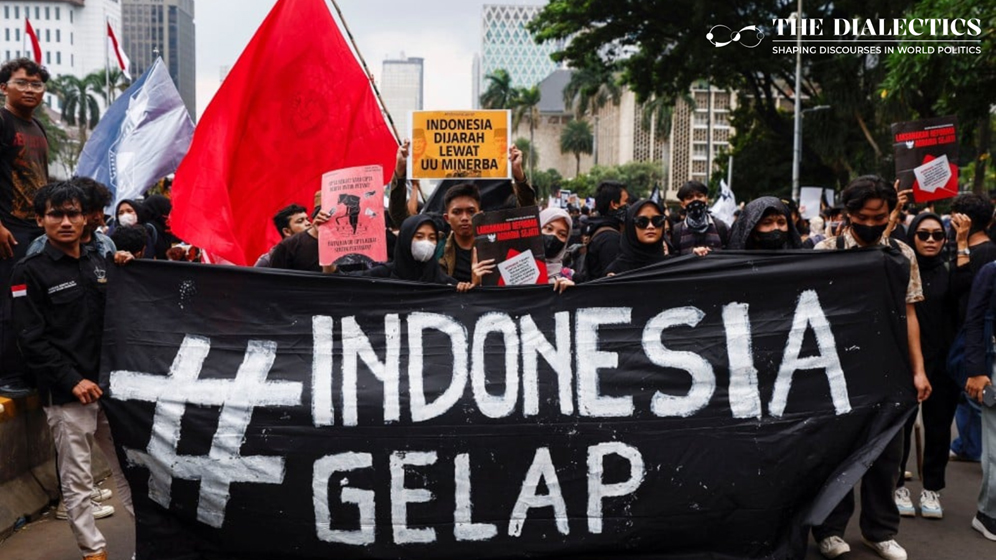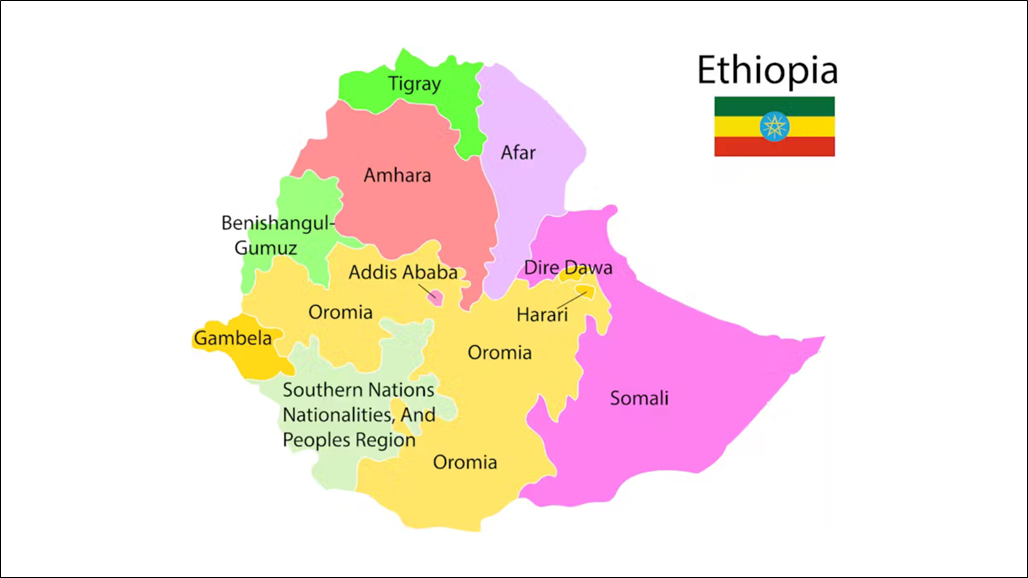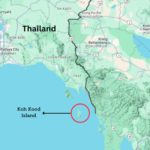After a successful student protest in terms of bringing down the Hasina Government in Bangladesh, another student protest erupted last month in Indonesia. Indonesia’s new President, Prabowo Subianto, is facing mounting opposition from students nationwide just months into his presidency. The protests, known as “Indonesia Gelap” or ‘Dark Indonesia,’ reflect widespread dissatisfaction with government policies that students believe will exacerbate economic and social hardships. Thousands of students have taken to the streets in Jakarta, Bandung, Surabaya, Semarang, Aceh, and other major cities, demanding a reversal of budget cuts, increased transparency, and a reevaluation of key government programs.
The demonstrations intensified in mid-February. The largest rally occurred on February 20 in front of the presidential palace in Jakarta. As students expressed their anger over declining education funding, the government’s response—marked by tear gas and water cannons—escalated tensions. Student protesters argue that recent austerity measures, especially those affecting higher education, are unjustifiable and possibly damage their future prospects.
Why are they protesting?
At the heart of the students’ frustration is the government’s aggressive budget-cutting policy. The policy is termed ‘efisiensi anggaran’ (budget efficiency). President Prabowo initially announced a cut of IDR 306.7 trillion (USD 18.7 billion) in early January, only to more than double this amount to IDR 705 trillion (USD 43 billion) in February. The budget cuts hit the education department the hardest. The Ministry of Higher Education, Science, and Technology suffered nearly a 25% reduction in funds.
These cuts come as Prabowo’s administration prioritizes a costly free meal program for students. The program is estimated to cost USD 7 billion this year and potentially exceed USD 40 billion annually when fully implemented. The government claims this initiative will address malnutrition, but students argue that it diverts the required funds from education.
Apart from all these, Prabowo’s decision to form a historically large cabinet, dubbed the ‘Red and White Cabinet’. This comprises 112 officials, including 48 ministers and 59 deputy ministers. The expansion contradicts the government’s stated goal of fiscal efficiency. Protesters view it as an example of bureaucratic excess, especially as budget cuts threaten university funding, scholarships, and tuition fees.
Beyond economic concerns, students are also irritated by Prabowo’s moves to reintegrate the military into civilian affairs. They fear the revival of ‘dwi fungsi Abri’ (the military’s dual function). This is a policy from the Suharto era that granted the armed forces influence over political and economic matters. This has raised worries about Indonesia backsliding into authoritarian governance.
But what are the Students’ Demands?
Organizations like BEM SI (All Indonesia Student Executive Body) and DEMA (Student Council) are leading the student movement. They have raised 13 key demands. Among them, they are calling for:
1. A reassessment of the budget cuts, particularly those affecting education and healthcare.
2. Greater transparency in government tax usage.
3. The elimination of policies that prioritize political appointees over public welfare.
4. A reevaluation of the free meal program’s funding sources.
5. Repeal of the new coal and mineral law, which allows universities to benefit from mining concessions.
6. Reduction in the military’s role in civilian affairs.
7. A more efficient and less bloated government structure.
8. Measures to address the high unemployment rate among graduates.
9. Free Education
10. Refuse the national strategic project that doesn’t orient for the people of Indonesia.
The government has said that the administration is considering their demand, but no concrete decision has been taken yet to entertain the student’s demands. As events and decisions unfold in the upcoming months, our team will inform you about them in detail in an in-depth article.




